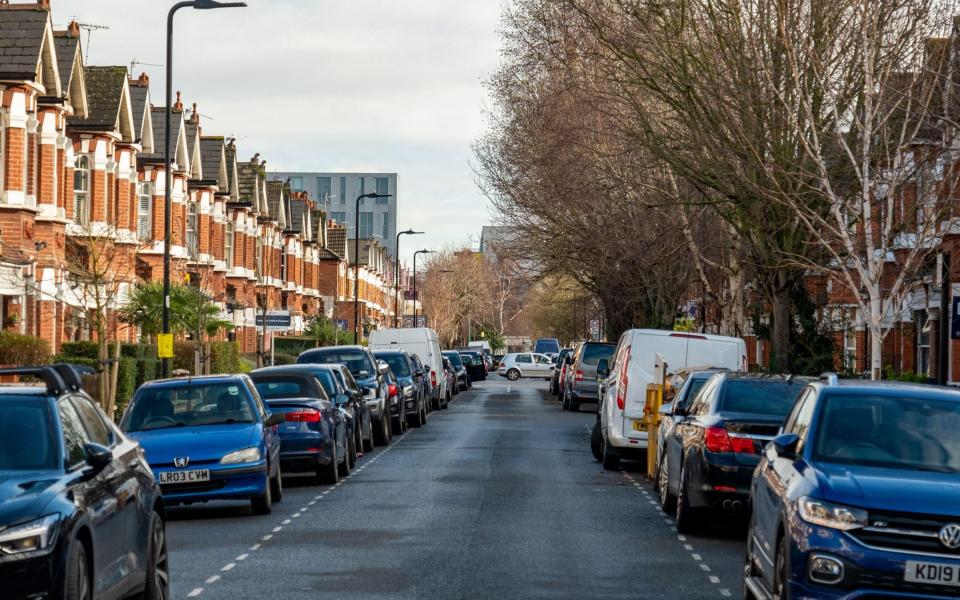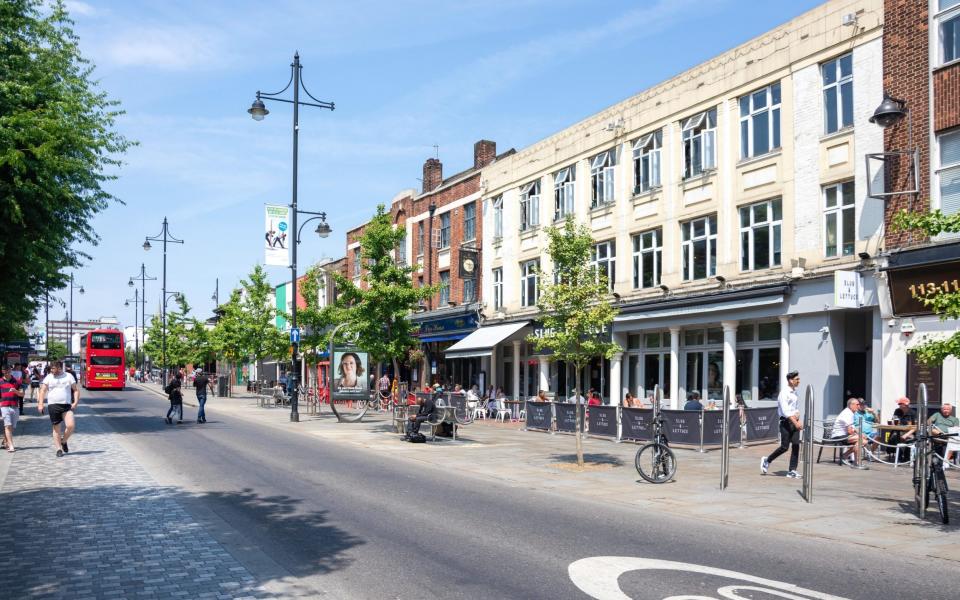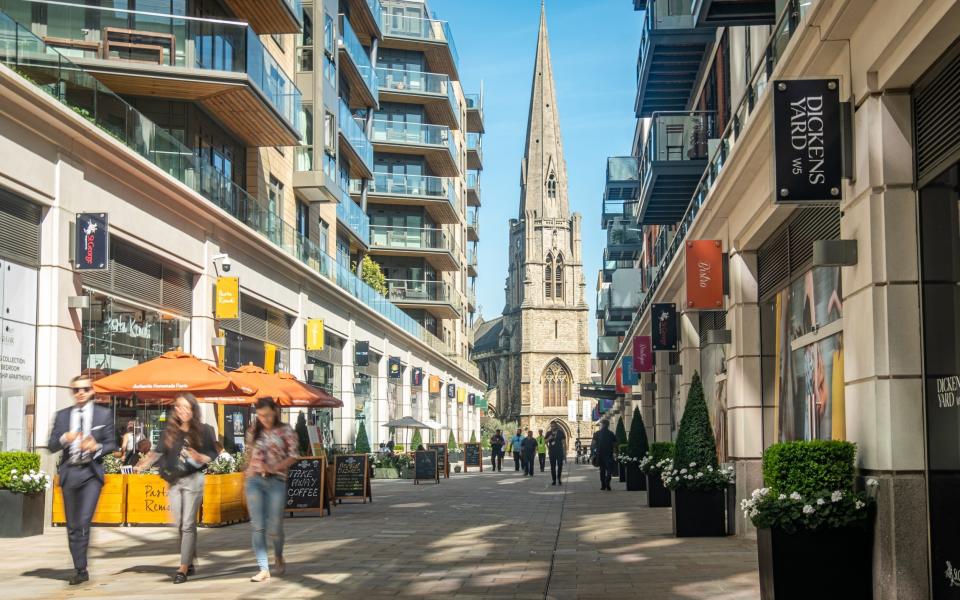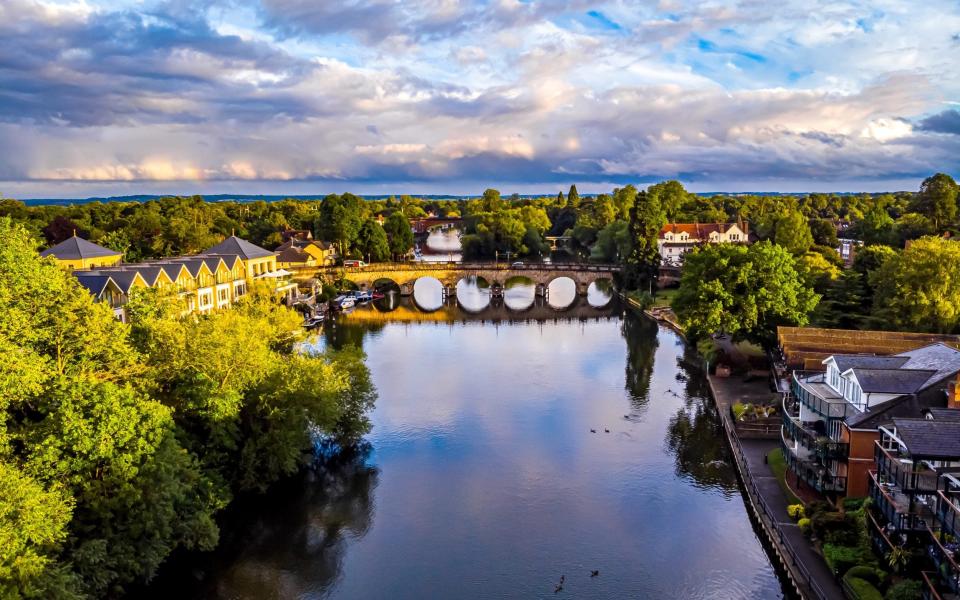House price hotspots: where to invest in property along the Elizabeth Line

The first construction work on the Elizabeth Line – also known as Crossrail – began almost 13 years ago on May 15 2009. Now, it is almost here, due to open on May 24.
When it was first announced, investment poured into property along the line. But that didn’t always translate into rising house prices as delay after delay hit, said Marc von Grundherr, of estate agents Benham and Reeves.
“There was an awful lot of excitement when it first launched all those years ago; we saw an influx of buyers purchasing homes in the outer boroughs of London and the Home Counties,” he said.
“This meant house prices and rental figures skyrocketed. But as Crossrail derailed, so did growth rates.”
While some areas around Crossrail stations recorded strong house price growth, such as Bond Street, where prices within 500m (1,600ft) of the station climbed 8pc, many did not.
Two thirds of stations along the Elizabeth Line which stand within residential areas (excluding, for example, Heathrow Airport) have not seen a significant rise in prices between 2008 and now, research by estate agency Savills found.
The data suggests that values within 500m of many (but not all) west London stations have performed in line with the wider area (measured as between 1 and 2km – up to 1.2miles – away) since construction started on Crossrail.
But in the areas around east London stations, where there is a higher concentration of flats, price growth was 0.5pc slower per year than in the wider area. It is here where buyers can invest now to reap the rewards of later price growth – and take advantage of the Crossrail effect.
Lawrence Bowles, of Savills, said: “Once full service starts on the line, we expect to see a Crossrail premium emerge.” Historically, areas near new rail projects have outperformed the wider market. In the five years after the Jubilee Line extension there was an average of 7.3pc annual growth around the stations, above the wider market.
Here are the most promising areas to invest around Crossrail stations, where house price growth has slumped but could now accelerate as it opens.
Custom House
The average home within 500m of Custom House station costs £360,964, but property values in close by Royal Docks have risen negligibly, by just 2.2pc annually, since Crossrail was announced. Meanwhile, areas a bit further out have recorded growth of 3.3pc a year.
This is a regeneration hotspot: 25,000 new homes are in the pipeline and £8bn worth of investment is being poured into the area, in part because of connections being improved by Crossrail.
Local businessman Ben Hession moved there from around Stratford.
“It was the sheer amount of investment in the area that attracted me,” said Mr Hession, who established Loaf.ly, a zero-waste business delivering fresh milk, bread and more around the area on a bike; locals describe him as a modern-day milkman. “I like the fact that we’re at the beginning of the creation of a new community.”
Acton
In parts residential and light industrial, housebuilders have moved into Acton in recent years, converting old warehouses and other buildings into new housing. Crossrail was a huge factor in this, with the journey to Bond Street falling from 43 minutes to just nine.
In the 500m around the station, property prices have increased by 3.8pc annually in the years since construction began, to reach £616,182 in February, compared with 4.4pc in the wider area.
Until now, Acton as a whole has been overlooked, said Salim Hussain of estate agents Marsh & Parsons. “Prices are still very reasonable compared with neighbouring areas – for instance prices are much higher in Ealing even though it’s closer to central London.”
He added: “Savvy buyers who are living in two-bedroom flats in Notting Hill and Holland Park who can’t afford to upsize in those areas often move to Acton instead and this is only going to become more common as the desirability increases.”

Alice Sunderland is a personal trainer based in Acton. She and her family moved here in search of more space and to be closer to the new station in 2018. “My husband is quite brave when it comes to property and likes to take on projects in places that he feels are on the rise,” she explained.
Their house is just a few minutes’ walk from the Acton Main Line. “It’s so exciting. I can’t believe how quick it’ll be to go into the West End and it’ll open up going across to east London, too. But I really feel that there is so much potential here, with lots of young families moving into this area and new businesses opening.”
Nina Harrison at Haringtons, a buying agency, added: “Agents have been talking up the benefits of Crossrail in Acton for years, but I’m not sure anyone has really taken much notice. The opening of Crossrail will see a whole new level of interest in the area.”
Romford, Essex
While house prices in the wider area of this Essex commuter town have risen by 4.1pc annually since 2008, those around the station have only increased by 2.8pc a year to reach an average of £286,142.

Trains on the new line will take 27 minutes to reach Liverpool Street. A fly in the future of Romford is that ambitious plans to redevelop the town centre, and introduce new housing, have stalled.
Permission was granted earlier this year for the former ice rink site close to the Elizabeth Line station to be converted into nearly 1,000 new homes with various amenities including a medical centre.
Woolwich
There’s been so much going on in Woolwich in recent years that some have begun to dub it “Coolwich”.
Major property developments, including Royal Arsenal Riverside, have transformed former munitions factories and military buildings into smart new riverside homes.
It forms part of the £1.2bn regeneration scheme for the area, with a further £17m secured from the Future High Streets Fund for improvements to the town centre.
Despite all this investment, it currently has the greatest price difference of all the stations compared to the wider area around it.
Values of properties within 500m of the station have risen by 2.3pc annually, to an average of £330,254, since construction of the new line began, while those between 1km and 2km away have risen by 5.2pc a year.
The fact that the journey to the city will be halved when the Elizabeth Line opens is bound to have an impact.
Having recently moved from Wales to south-east London, Dr Aditi Shinde and Dr Soubhik Ghosh decided on a three-bedroom apartment in Trinity Walk, a new development in Woolwich.
“Crossrail opening this summer was a big consideration for our move as it will reduce the commute to my workplace,” said Dr Shinde. Her journey will be 30 minutes by train while her husband’s will be just 10 minutes.
She added: “Woolwich works well for us as there is a local community to feel connected to – we enjoy going to the local cinema, the choice of shops and great access to get around the capital.”
Ealing Broadway
The long-standing irony that a centre of film-making in the UK – and the birthplace of its very own genre of comedy – has been without a functioning cinema since 2008 is nearly over.
But now Ealing Filmworks, an eight-screen cinema with over 1,000 seats, will be the largest Picturehouse cinema outside the West End.

The station, which is a seven-minute walk from the cinema, puts Ealing within 11 minutes of central London. That, according to Nick Vaughan of Savills, will make it London’s best-connected borough, factoring in the two existing underground stations and National Rail services.
“With community at its heart, this vibrant destination is very much the sum of its eclectic parts,” said Mr Vaughan.
There is value to be found here: prices around the new station in Ealing Broadway have grown by 4.3pc annually since the Crossrail project began, hitting £731,929 in February, while values further away are now 5pc a year higher.
Glenn Kelly, a motion capture specialist who works at Ealing Film Studios, bought a flat at the Filmworks development, adjacent to the new cinema. “Taking the long-term view, I think it will make it easier to sell,” said Mr Kelly. “As a result of Crossrail, Ealing is moving away from its ‘queen of the suburbs’ image and becoming more vibrant.”
Maidenhead, Berkshire
Long-standing commuter towns such as Maidenhead have always been popular choices for families, giving a balance of access to the countryside as well as the capital.
The impact of the Elizabeth Line is likely to make this even more so but for now, properties around the main station, which cost an average of £373,038, offer more value than those further away – rising by 3.3pc and 3.4pc annually respectively since 2008.

Katie Herbert, who works for a PR company based in the City, grew up in Maidenhead and has moved back from London to raise a family. “Maidenhead has great schools and has always been a fast commute to Paddington – even before the murmurings of Crossrail,” she said.
“My partner and I are now looking to buy a family home, though with ever-rising house prices our budget is pushing us further afield to peripheral towns like Bracknell and Woodley.”
As her commute is to Moorgate, Maidenhead remains a preferred location because of the connections to Liverpool Street.
“Time is incredibly precious when raising a young family and shaving off 30 minutes to be able to do the nursery run is a game changer. It’s the classic dilemma of either prioritising a nicer home or its location.”
Demand is currently very strong. Agents say they have buyers waiting on the sidelines and don’t need to advertise any new listings as a result.
“These key commuter towns seem to be a game of who you know to get in the door of a brilliant house,” said Herbert. “Wait too long and you have no chance.”

 Yahoo Finance
Yahoo Finance 